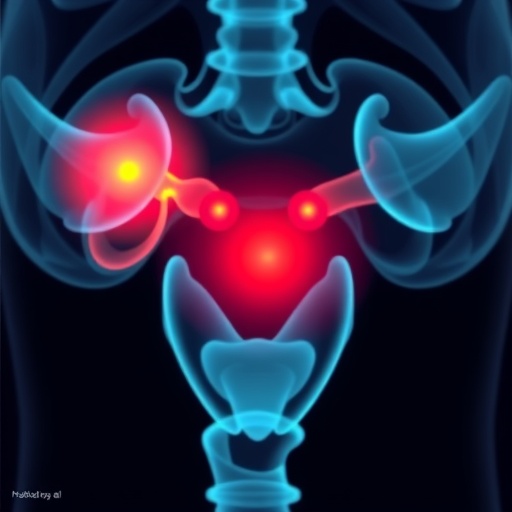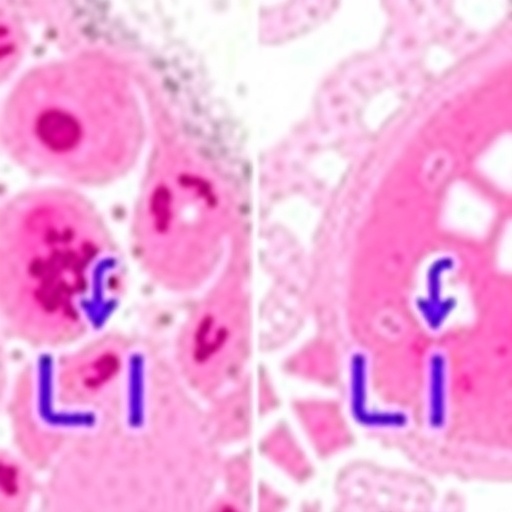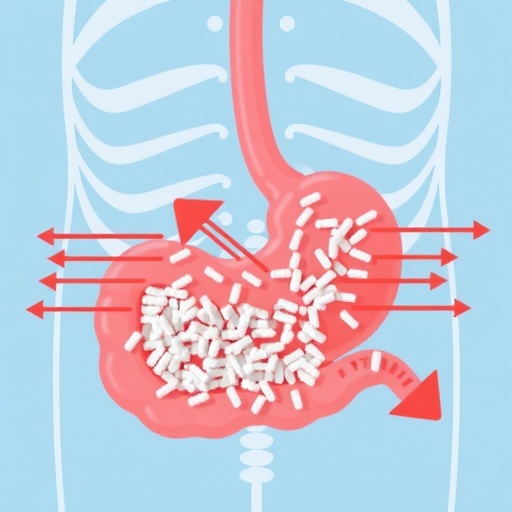In a significant leap forward for gynecologic oncology, a new study published in BMC Cancer unveils an innovative approach to predicting the severity of cervical intraepithelial neoplasia (CIN) using advanced artificial intelligence (AI) methods. CIN, a precancerous condition commonly preceding invasive cervical cancer, has long challenged clinicians with its variable progression and the consequent difficulty in timely and accurate risk assessment. Traditional screening methodologies, while essential, often fall short when addressing the nuanced interplay of diverse clinical and biological factors influencing the trajectory of CIN. This pioneering research introduces a comprehensive AI-driven predictive framework that promises not only enhanced precision but also a transformative potential for personalized patient care and system-wide clinical adoption.
At the core of this study’s approach is the integration of multiple machine learning (ML) and deep learning techniques, specifically Support Vector Machines (SVM) and Neural Networks (NN), sophisticated algorithms known for their capacity to model complex, non-linear relationships inherent in medical datasets. By leveraging these models, the researchers sought to encapsulate a multi-dimensional view of CIN progression, which involves demographic, reproductive, lifestyle, and virological data—a holistic dataset that surpasses the limited scope of traditional risk assessments. This integrative methodology allows for a more dynamic and granular prediction, responding accurately to the heterogeneity seen among patients in real clinical scenarios.
The process involved comprehensive data collection from diverse patient cohorts, carefully curated to encompass key factors such as age, smoking status, sexual activity, HPV genotypes, and immune status. Importantly, the distinction of temporally separate validation sets ensures that the model’s predictability holds strong across different patient populations and timeframes, a crucial factor in establishing clinical reliability. The study’s rigorous approach to validation also highlights the robustness of the AI models, surpassing benchmarks typically achieved by conventional logistic regression models or standard screening scores.
One of the standout findings of the research is the high Area Under the Curve (AUC) and recall rates achieved by the AI models during validation. These metrics are pivotal in diagnostic predictions; a high AUC denotes excellent discriminative ability to differentiate between various CIN severity levels, while an elevated recall ensures that the model minimizes false negatives, thus reducing the risk of missed diagnoses. By achieving these outcomes, the predictive models signal a strong potential for clinical utility, specifically in refining patient stratification to determine who may require immediate intervention versus those suitable for conservative follow-up.
This level of predictive accuracy is particularly relevant given that overtreatment remains a major concern in contemporary cervical cancer prevention strategies. Unnecessary procedures can cause physical harm and psychological stress, as well as inflate healthcare costs. AI’s ability to personalize risk assessment may therefore usher in a new era in which therapeutic decisions are finely tuned to individual patient profiles, enhancing both care quality and resource allocation within healthcare systems.
Beyond the direct clinical implications, the study also addresses the broader context of AI adoption in healthcare through the integration of clinical adoption frameworks. This important dimension recognizes that the translation of AI technologies from research environments to routine clinical use involves overcoming barriers such as clinician trust, regulatory approval, and workflow integration. The researchers highlighted pathways for embedding these AI-based predictive tools responsibly and effectively, emphasizing interdisciplinary collaboration between data scientists, clinicians, and policy-makers.
Notably, this translational perspective ensures that the AI models do not remain isolated technical achievements but progress towards real-world impact. The frameworks outlined could serve as blueprints for future AI applications across diverse medical fields, demonstrating the necessity of combining technical validation with practical implementation strategies.
Delving deeper into the technical architecture, the study employed feature engineering techniques to refine input variables and enhance model interpretability. This includes transforming clinical variables into formats more amenable to machine learning models and applying dimensionality reduction methods to mitigate the curse of dimensionality. The balance between model complexity and interpretability was carefully maintained, recognizing that clinical applicability demands transparent and explainable AI systems to gain the confidence of healthcare providers.
Moreover, the neural network architectures utilized multilayer perceptrons trained with backpropagation optimization, while support vector machines employed kernel functions tailored to the distinct data characteristics, such as radial basis function (RBF) kernels. These choices facilitated capturing both linear and complex non-linear relationships in the dataset, a critical factor given the intricate biological mechanisms underpinning CIN progression.
From a virological perspective, the detailed incorporation of HPV genotyping marks an important advancement. HPV, the primary etiological agent in cervical neoplasia, exhibits variable oncogenic potential across different strains. Integrating this virological data enhances model precision and underlines the biological plausibility of the AI predictions, aligning computational outputs with current molecular understandings of cervical carcinogenesis.
The research also explored the longitudinal component implicit in CIN progression, acknowledging that static snapshot measurements are insufficient. By considering temporal patterns and patient histories, the model could better forecast disease trajectories, offering a dynamic risk evaluation rather than a one-time risk score. This ability positions the AI framework well for incorporation into personalized screening schedules, potentially allowing dynamic adjustment of screening intervals based on an individual’s evolving risk profile.
In terms of broader healthcare impact, the adoption of these AI tools promises to optimize resource utilization. By accurately identifying high-risk patients, healthcare systems can prioritize diagnostic and therapeutic resources more effectively, reducing unnecessary referrals and focusing specialist attention where it is most needed. This could contribute to significant cost savings and reduce patient burden, enhancing the overall efficiency of cervical cancer preventive programs.
Ethical considerations were also addressed, particularly concerning data privacy and the mitigation of algorithmic biases. By employing rigorous data anonymization techniques and evaluating model performance across demographically diverse subgroups, the study acknowledges the importance of equitable healthcare delivery and strives to prevent disparities exacerbated by AI deployment.
Finally, the study represents a milestone in how AI can be harnessed to tackle complex medical challenges, reinforcing the vision of AI as a tool that complements and enhances clinical judgment rather than replacing it. It underscores the necessity of continued research and collaboration across disciplines to refine AI applications and validate their performance in real-world clinical settings.
Looking ahead, this study opens multiple pathways for further investigation, including prospective clinical trials to assess the real-time impact of AI-driven screening in cervical cancer prevention, and expansion into other precancerous conditions where similar predictive difficulties exist. The implementation of this AI framework has the potential to revolutionize cervical healthcare, reducing the global burden of cervical cancer through earlier, more accurate predictions and personalized patient management strategies.
In summary, the deployment of sophisticated AI models in assessing cervical intraepithelial neoplasia severity establishes a groundbreaking precedent for precision medicine in gynecologic oncology. Through comprehensive data integration, state-of-the-art modeling, and pragmatic adoption frameworks, this research not only advances scientific understanding but also propels clinical practice towards a future where AI-guided interventions become the standard, heralding improved outcomes for women worldwide.
Subject of Research: Artificial intelligence-driven predictive modeling of cervical intraepithelial neoplasia severity.
Article Title: AI-Driven predictive modeling of cervical intraepithelial neoplasia severity: a comprehensive analysis with clinical adoption frameworks.
Article References:
Farzaneh, F., Soltani, A., Dastyar, F. et al. AI-Driven predictive modeling of cervical intraepithelial neoplasia severity: a comprehensive analysis with clinical adoption frameworks. BMC Cancer 25, 1521 (2025). https://doi.org/10.1186/s12885-025-14974-4
Image Credits: Scienmag.com
DOI: https://doi.org/10.1186/s12885-025-14974-4
Tags: advanced algorithms in healthcareAI in gynecologic oncologycervical intraepithelial neoplasia predictioncomprehensive risk assessment methodologiesdeep learning applications in medicineinnovative approaches to cancer screeningmachine learning for cancer risk assessmentNeural Networks for disease progressionpersonalized patient care in oncologypredictive modeling for cervical neoplasiaSupport Vector Machines in cancer researchtransformative potential of AI in clinical settings





